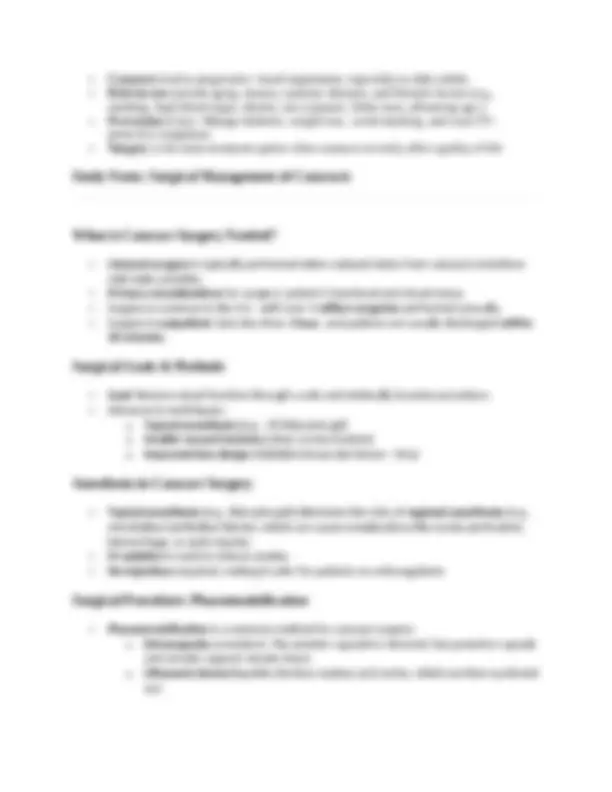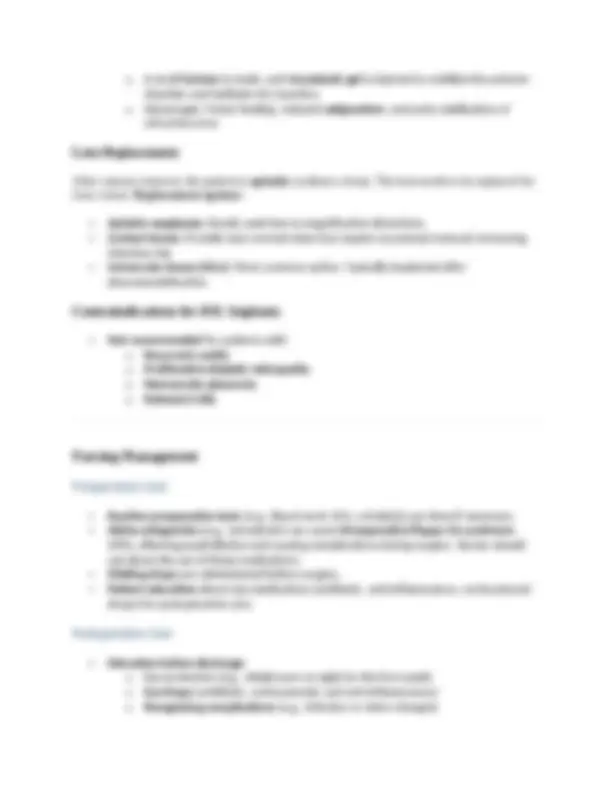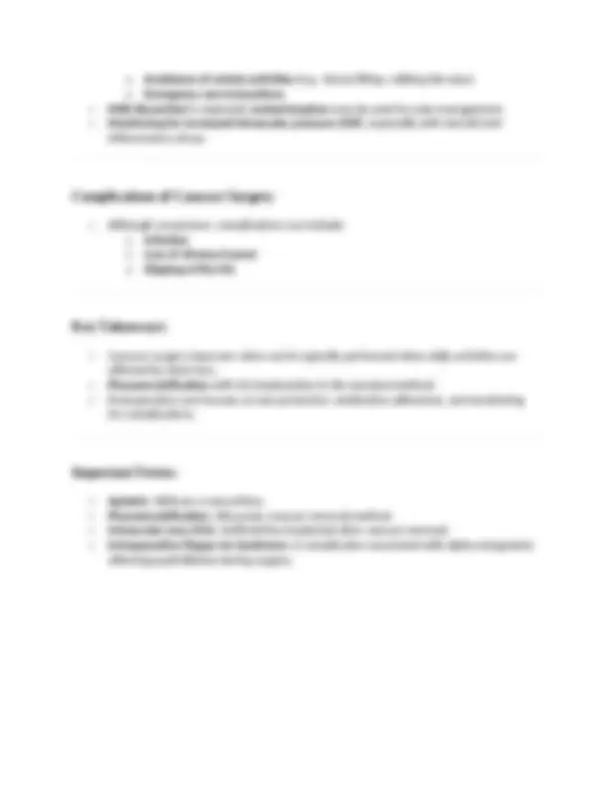





Study with the several resources on Docsity

Earn points by helping other students or get them with a premium plan


Prepare for your exams
Study with the several resources on Docsity

Earn points to download
Earn points by helping other students or get them with a premium plan
Community
Ask the community for help and clear up your study doubts
Discover the best universities in your country according to Docsity users
Free resources
Download our free guides on studying techniques, anxiety management strategies, and thesis advice from Docsity tutors
study note for exam for NSG 223 course.
Typology: Study notes
1 / 5

This page cannot be seen from the preview
Don't miss anything!




Introduction Cataracts refer to lens opacity or cloudiness in the eye. Affects approximately 18 million people worldwide, and over half of Americans by the age of 80 (Norris, 2019). Cataracts are a leading cause of blindness globally (Prevent Blindness America, 2020). Pathophysiology Cataracts can develop in one or both eyes at any age. Most common types:
o Diabetes, lipid metabolism disorders, Down syndrome, musculoskeletal and renal disorders. Clinical Manifestations Common Symptoms : o Painless blurry vision. o Dimming of surroundings (as if glasses need cleaning). o Sensitivity to glare and reduced contrast sensitivity. o Myopic shift (ability to see close work without glasses). o Astigmatism and monocular diplopia (double vision). o Color perception changes (lens turns brownish). Assessment and Diagnostic Findings Visual Acuity : Decreased visual acuity correlates with cataract density, but is not always an accurate reflection of visual impairment. Diagnostic Tools : o Snellen Visual Acuity Test : Measures visual sharpness. o Ophthalmoscopy : Examines the retina and lens. o Slit-lamp Biomicroscopic Examination : Assesses lens opacity. Note : Cataract severity doesn’t always correlate with visual function. Some patients may perform normally despite significant cataract formation. Medical Management Nonsurgical Treatments : No effective nonsurgical methods (e.g., eye drops, glasses) cure cataracts or prevent age-related cataracts. Prevention & Education : o Risk reduction through smoking cessation, weight control, and diabetes management. o Sunscreen protection (sunglasses) to prevent UV-induced cataract formation. o Regular eye exams to detect cataracts early. Surgical Treatment : If visual impairment significantly affects daily life, cataract surgery (lens removal) is the most effective treatment. Key Takeaways
o A small incision is made, and viscoelastic gel is injected to stabilize the anterior chamber and facilitate IOL insertion. o Advantages: Faster healing, reduced astigmatism , and early stabilization of refractive error.
After cataract removal, the patient is aphakic (without a lens). The lens needs to be replaced for clear vision. Replacement options : Aphakic eyeglasses : Rarely used due to magnification distortions. Contact lenses : Provide near-normal vision but require occasional removal, increasing infection risk. Intraocular lenses (IOLs) : Most common option. Typically implanted after phacoemulsification.
Not recommended for patients with: o Recurrent uveitis o Proliferative diabetic retinopathy o Neovascular glaucoma o Rubeosis iridis
Preoperative Care Routine preoperative tests (e.g., blood work, ECG, urinalysis) are done if necessary. Alpha-antagonists (e.g., tamsulosin) can cause intraoperative floppy iris syndrome (IFIS), affecting pupil dilation and causing complications during surgery. Nurses should ask about the use of these medications. Dilating drops are administered before surgery. Patient education about eye medications (antibiotic, anti-inflammatory, corticosteroid drops) for postoperative care. Postoperative Care Education before discharge : o Eye protection (e.g., shield worn at night for the first week) o Eye drops (antibiotic, corticosteroid, and anti-inflammatory) o Recognizing complications (e.g., infection or vision changes)
o Avoidance of certain activities (e.g., heavy lifting, rubbing the eyes) o Emergency care instructions Mild discomfort is expected; acetaminophen may be used for pain management. Monitoring for increased intraocular pressure (IOP) , especially with steroid/anti- inflammatory drops.
Although uncommon, complications can include: o Infection o Loss of vitreous humor o Slipping of the IOL
Cataract surgery improves vision and is typically performed when daily activities are affected by vision loss. Phacoemulsification with IOL implantation is the standard method. Postoperative care focuses on eye protection, medication adherence, and monitoring for complications.
Aphakic : Without a natural lens. Phacoemulsification : Ultrasonic cataract removal method. Intraocular Lens (IOL) : Artificial lens implanted after cataract removal. Intraoperative Floppy Iris Syndrome : A complication associated with alpha-antagonists affecting pupil dilation during surgery.